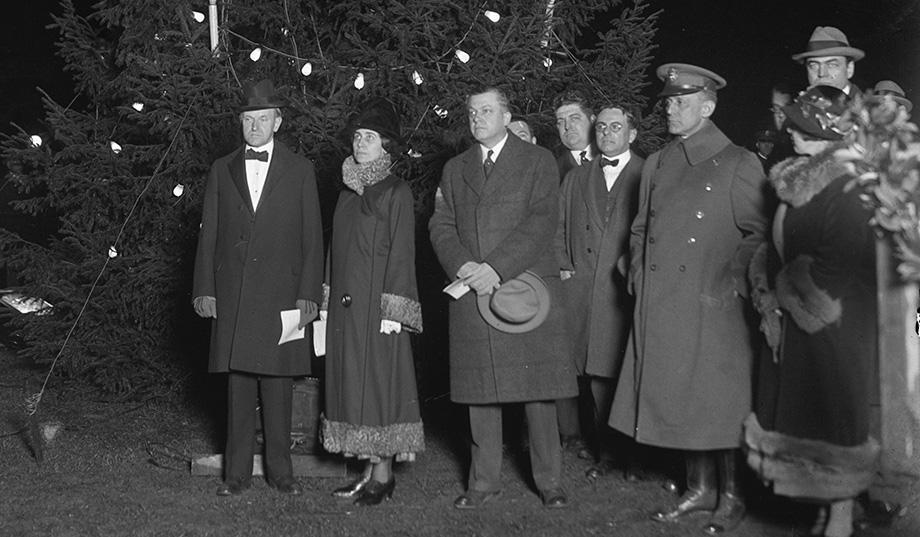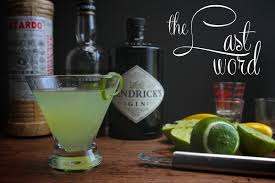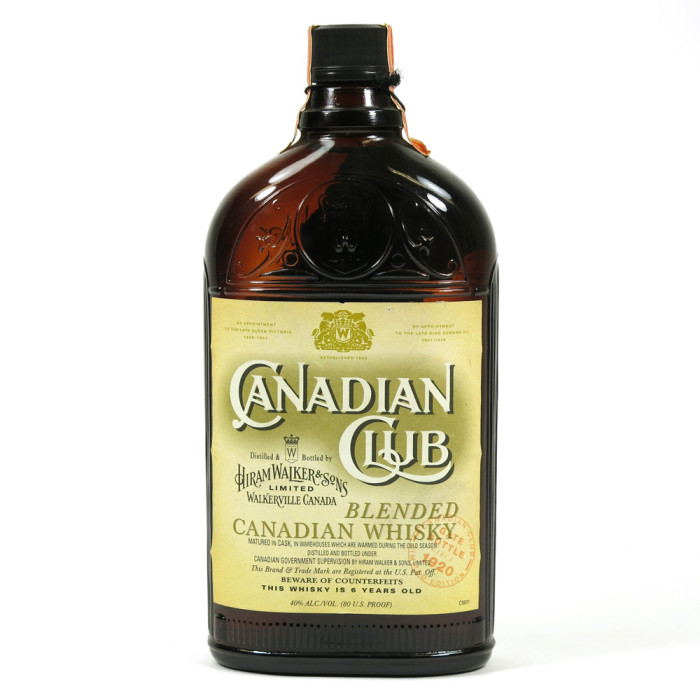Happy Holidays from Hamtramck, where I’ve spent the last bit digging deep into partying history. Because why not? Christmas and New Year’s Eve are kind of the big dogs of revelry, so I wondered what it was like for the generation who came of age trying to get their drink on despite federal law. I found that, in fact, not much changed: although holiday traditions did look a bit different than they do now, most of the holiday experiences we share now first sprung up during the 1920s.
For example, Christmas trees. They’re a staple of Victorian imagery, but the modern family tree really became de rigueur in the States in the 1920s, especially once electric lights became common. In fact, good old Silent Cal Coolidge presided over the lighting of the first outdoor White House Christmas tree on Christmas Eve, 1923. It was decked out in red, green and white electric bulbs and towered a full 48 feet high. AND! One of the first, if not the first recorded use of electric lights on a Christmas tree belonged to an associate of Thomas Edison, and was reported in 1882 by the Detroit Post and Tribune as “presenting a most picturesque and uncanny aspect…It was brilliantly lighted with many colored globes about as large as an English walnut, and was turning some six times a minute … the scintillating evergreen was a pretty sight.” Sounds enchanting.

The marvels of electronic production also included the revolutionary invention, the radio. And here again Detroit played a major part. The proliferation of home radios in the 1920s, largely due to quicker and more mechanized production here in Detroit, meant that a radio was THE hot Christmas gift for much of the 1920s. We were at the forefront of that technology too: the new WWJ radio station broadcast the first New Year’s concert in the country in 1920, just months after the station had gone live. From the Detroit News on January 1, 1921:
The voice was carried over Detroit at boisterous play over villages and towns where only churches and scattered homes showed lights and indications of watchers for the new year, over silent, snow drifted farms, over the timber lands of Canada, over the gray, cold waters of the lakes, rushing unheard past the listening ears of birds and of untold thousands of men and women who were up and about, unconscious that the melody of “For Them Alone” was swirling, drifting, spinning above their heads, a cloud of music between the chill streets and the high distant stars.
In Detroit hundreds of receivers were set and waiting for the concert to begin. As the hour hands drew their slender lengths together, a trumpet was raised by Robert J. Hovey and just before the hour was struck, the saddest, sweetest music of all the Army sounded out, the soldier’s good-by, “taps,” an echoing farewell to the old year that was done. Then came the rousing “I can’t get ’em up” of reveille.
From the web of streets about the downtown section there was a roaring tumult of sound, a flashing of lights, a singing of “Should Auld Acquaintance be Forgot” and echoing them came the dull rumble of deep toned whistles, the screaming wall of sirens, the crash of guns and the mad chimes of hundreds of bells from church tower and belfry.
But even as the thunder rose to afront a silent sky the sweet voice of the singer in the wizard room at The News rang on and on and the waves carried it safe and secure through all those battling, clashing other waves so that not a word, not a note was missed by those listening in.
Good to know that the New Year’s tradition of gunfire and clamor is a long-standing one. Take a read here as Amy Elliott Bragg talks about the cacophony as early as the 1830s in Detroit. So yeah, we partied it up right. The Detroit News reported on New Year’s Day in 1924 that over 100,000 revelers clogged the city streets in “a carnival of drunkenness” with “ribald cries and profanity”. Despite Prohibition, the News tells us, “it was drink, drink, drink everywhere.” Sounds about right.
So, at the holidays in Detroit during Prohibition, if you weren’t jamming in the streets, you were likely at a party of some kind or another. The less-fortunate might have a modest tipple at a private home or a blind pig. The Goodfellows group, along with the Old Newsboys Club and the Rotary Club, spread Christmas cheer to underprivileged kids in this remarkably creepy party. Warning: there are freaky clowns playing accordions and children with giant bows on their heads and a very confused looking man in that video. Watch at your own risk, and be thankful that clowns are no longer staples at Christmas parties.
The more well-heeled set attended dances and lavish dinner parties, much like they do today. The Detroit Athletic Club’s annual parties were the go-to place to see and be seen by the industrial elites and socialites. Although the Club technically forbade drinking on the premises, that rule was only loosely acknowledged; the DAC’s historian Ken Voyles points out that it was common for club members to ask “May I bring something on the hip?” before attending a DAC bash. The fact that The Last Word cocktail was invented at the Club sometime around Prohibition proves that members managed to get their drink on regardless of Club rules. Here’s a pretty picture of the cocktail:

At the DAC, too, member Hiram H. Walker, heir to the Canadian Club fortune, introduced a new bottle design for the popular whisky: called the “Bootlegger Bottle”, the new design was flat and sported a shorter neck–all the easier to strap to your hip or alongside a garter. Portable potables!

And the notorious scoundrel and partier extraordinaire, Edward Albert, the Prince of Wales, spent several days in 1924 as a guest at the DAC of Edsel Ford, where he took mixology lessons from Club member Phelps Newberry. This is the very same King Edward VIII who would scandalize global society by abdicating the throne to marry American divorcee Wallace Simpson after barely a year on the throne. And he came by his partying ways honestly: his grandfather, the long-suffering Edward VII, waited 60 stinking years to ascend the throne while his mum, the great Victoria, reigned. While he waited, he partied, Edward VII did. David Wondrich gives us this recipe for the Prince of Wales Cocktail, designed by Eddy Seven, and concludes, “If his circumstances had been different, Albert Edward, Prince of Wales, would’ve made a hell of a bartender”. Here’s the drink:
1-1/2 oz Rye Whiskey
1 oz Champagne
1/4 oz Maraschino Liqueur
Dash of Angostura Bitters
Small slice pinapple
1 tsp Powdered Sugar
Crushed Ice
Lemon Peel for garnish
To build the drink, you first mix the sugar and bitters in the glass. Then add everything but the champagne, and shake the ever-loving crap out of it. Strain it into a cold glass, add the champagne and garnish with lemon peel. Another delicious holiday-appropriate cocktail.And finally, since we’re on the subject of cocktails, let’s bring it back up to Prohibition. I found this gem in the archives of the Adcrafter magazine of Detroit from Christmas 1926. Use this one at your own risk:
Formula for not going blind during any holiday drinking season:
Take hooker of gin, another of Scotch; partially fill goblet with cracked ice; pour Scotch and gin into goblet; squeeze contents of one lemon or lime into goblet; add sugar or (better) sugar syrup to suit taste and add a dash of absinthe; take syphon of soda-water; permit thin, hissing stream of soda-water to fizz into goblet; pour contents of goblet into sink; drink bottle of Vernors Ginger Ale; call plumber to repair corroded sink.
Maybe we’ll skip that one…
Happy Holidays to you and yours! See you at the bar.
Be First to Comment